In the last post at Burn the Fat Blog, I shared 10 of the biggest fat loss diet problems, obstacles and challenges that readers told me they felt were holding them back from reaching their fat loss goals. [Link to Part 1]
Hundreds of people shared their frustrations with me as part of a survey we did on Facebook. Not surprisingly, nearly everyone said they were finding it harder than ever to reach fitness and weight control goals in the year of covid-19. Stress eating was getting the best of many people. Gym closures didn’t help either.
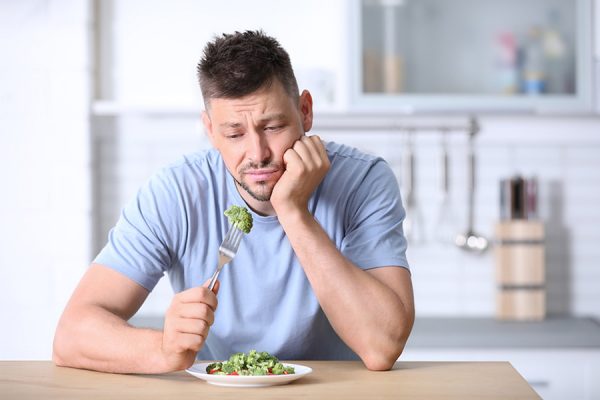
There were hundreds of replies to this survey, but about 20 or so of the same problems were named over and over again by different individuals. The first 10 were in the last post.
In today’s post, you’ll see 10 more of the biggest diet challenges in the exact words of these real people who shared them. I promised followers that if they posted their problems, I’d offer solutions, so once again, after each problem is listed, you’ll see my reply that solves it.
And once again, as you read my answers, you’ll see a recurring theme is how I believe flexible dieting is a big part of the solutions. Rigid dieting, and the associated all-or-none thinking is the very thing most people think will give them the most success, but is the cause of many diet failures.
1. My biggest nutritional challenge is getting all my veggies in. I don’t really like veggies.
One word for you: Roasting! If you haven’t started roasting veggies (in the oven) yet, you are missing out. They are awesome. Zucchini, Brussels sprouts, cauliflower, any veggies! A small amount of olive oil with salt and pepper alone is tasty. Add other spices, herbs and even lowfat parmesan cheese – even better.
But there’ no shame in heating up those bags of frozen veggies in the microwave. I see why someone would say “I don’t like veggies” if they only way they cook them is nuking them, but even I do it sometimes when I’m in a hurry. Takes about four minutes. It helps to keep your freezer stocked up. But also buy lots of fresh veggies and learn different ways to prepare them. Steaming veggies requires zero culinary skill, tastes way better than microwaved veggies, and only takes minutes.
Here’s a few more ideas. First, load your morning eggs with veggies. Make scrambles, omelets or frittatas with mushrooms, bell peppers, onions, tomatoes, spinach or anything else you like (or whatever happens to be left in the refrigerator). Use seasonings and add low or nonfat cheese for a real treat.
Second, load up those stir fry’s with veggies! A little less rice, a lot more veggies, with minimal oil along with your lean protein for the best fat loss macros. By the way, you can “stir-fry” oil free using chicken broth/stock, a tablespoon at a time.
Third, become a salad person. In the case of salads there’s usually no cooking involved so it’s not hard. Load them up with all kinds of different veggies. And choose dressings wisely. There are many choices for reduced calorie and even zero calorie dressings.
Fourth, when you get to problem #4 below, take notice of my answer. You can be sneaky and “hide” veggies in pasta and other starchy meals. It lowers calorie density so you kill two birds with one stone.
Set a goal and guideline to eat a veggie or a fruit with every meal. But it’s more than a goal. This is a behavior to turn into a lifetime habit. A meal isn’t a meal without a veggie or at least a fruit. If you like fruits more than veggies, that’s fine, but try to find veggies you like and have big portions daily. It’s not that hard.
2. Eliminating processed foods is my challenge. I don’t have a lot of time and convenience is important to me, but there aren’t many healthy low-calorie options that you can pull out of a box and have shelf stable for a long time.
I can relate the convenience issue. It’s not like everyone can just walk into the kitchen and roast veggies, bake a potato and pan sear some salmon on lunch break. Yeah, I could, because I work at home, but not everyone does, nor do they want to cook a fresh meal in the middle of the day. Of course, you can cook meals like these in advance (“meal prepping” is the popular vernacular), but it’s also possible eat with high nutrient density, low calories and perfect macros with almost no prep.
At our members only “Inner Circle” site we have nutrition software called Burn the Fat Meal Planner. In that software I’ve saved at least a couple dozen of my meal plans. Some of them have some pretty fancy recipes (I like to cook), and definitely require prep time, especially since I eat five times a day for bodybuilding purposes.
But others require hardly any work. I labelled those “convenience meal plans” in the meal planner. I fall back on this kind of meal plan once in a while when my life circumstances change and I don’t have much time for a ton of meal prep. Here’s an example:
Breakfast:
Old fashioned oats with vanilla whey protein stirred in and blueberries
Lunch:
Chipotle Burrito bowl (only chicken or beef, rice, beans, salsa)
Dinner:
Chicken breast, rice, stir-fry veggies, low-cal teriyaki sauce or braggs liquid aminos (soy)
Evening snack / dessert:
Greek yogurt, 1 scoop chocolate protein, natural peanut butter (Reeses protein pudding), banana
The first thing to note is that there’s only three meals and a snack here. I’m a bodybuilder myself and I still to this day believe five or six meals a day is optimal for bodybuilding nutrition. But for general health and weight control, meal frequency really doesn’t matter that much if you hit your macro targets at the end of the day. That’s why you should choose your meal schedule with convenience in mind.
Next, notice how easy breakfast can be. I microwave oatmeal and stir protein in it with blueberries. It takes me about two minutes to make and only a few minutes to eat. This is the ultimate convenience meal that is still high in protein. When I’m busy I’m always looking for simplicity like this, I’m not making frittatas or waffles.
Lunch could be eaten at a “fast food” place but still be healthy. Chipoptle’s burrito bowl is chicken, rice, beans and salsa. That’s it. Just about perfect macros and 45 grams of protein. Someone else cooks it for you. A turkey, chicken or tuna sandwich on whole grain bread with fruit couldn’t get much easier and is a classic take-it-with-you packed lunch.
For dinner, yes it’s cooked at home. But here’s a tip: With a meal like stir-fry, cook it in bulk. Portion out one serving for the current meal, and put two to four remaining servings in containers and refrigerate. Now you have dinners (or lunches) for days already made. Look into slow cooker recipes too – great for big batches with lots of leftovers. (Beef stew for days!)
It’s worth putting some effort into learning healthy macro-based home cooking. Not strictly for convenience alone, but also because the more you do, the less you’ll desire packaged, processed food.
3. My challenge is fear of missing out (FOMO). I feel cranky and resentful that I can’t eat what I want when I want it. My husband and kids are obviously not on the same diet as me, and so on nights like last night where they had spaghetti with fresh garlic bread, my bun-less super lean hamburger with precisely portioned baked sweet potato fries and salad feels sad. I’ve straight up banned a couple of things (like enchiladas) because if they make them I will either cry or cave, or most likely, both.
This is the truth the diet police doesn’t want you to know: You can eat anything you want you if track the amount and or get in touch with your body’s natural fullness signals. But you can’t eat anything you want in unlimited amounts.
If you’re coming from a mindset of “restriction is the only way” and feel like spaghetti, enchiladas or burgers are bad foods or forbidden foods, ironically you may crave them more, and either cave in or cry and resent not being able to have them.
Most people who ban foods have a greater urge to binge because there’s a sense that it’s that last time you’ll have it in a while (or ever), so they feel the desire to fill up now.
Once you’ve caved in, it can be hard to stop. If you considered the food totally off limits, you perceive it as failure and the “What the hell effect” sets in: You say, “I already blew my diet, I might as well have more.” That rarely happens when a food is not banned in the first place.
When you allow any foods as part of your plan, it’s much easier to enjoy in moderation and eat healthy foods 80% or 90% of the time. The bottom line is, don’t ban foods. You can develop the skill of eating small portions of foods you love. Sure, there are exceptions. While I’m not equating food to drugs, many people do feel as if certain foods especially sugar, are addicting and for them abstinence is their only answer. But I think that’s the exception not the rule.
There is such a thing as “precisely portioned” spaghetti and burgers. There are also tricks to reduce the calorie density of starchy carbs. (See #4 below). Lower-calorie, higher protein cooking is a skill, like anything else. I’m still working on it myself, but I’ve come a long, long way and if I can do it, anyone can do it.
Any recipe can be adapted. Burgers can be made with 96% lean beef or even 99% fat-free ground turkey, easily making room for the bun, preferably whole grain. Enchiladas can be made with 99% lean chicken breast, nonfat or lowfat cheese, low calorie whole grain tortillas and minimal oil. Stay tuned to this page, as both meal planning and low calorie, high protein cooking will remain a big focus of future posts.
4. My love of starchy carbs gets me. Even when I choose healthy starches I seem to turn them into calorie bombs.
You do have to be careful with certain starchy carbs because they’re more calorie dense than fibrous carbs and green veggies. For example, pasta calories can add up fast. Even healthy whole grains, rice and cereals need to be portioned more carefully. You can load up on greens and vegetables and not worry about the calories.
But it’s often what you put on or in your starchy meal that makes the difference. If you add fats into a high starch meal, that’s what turns it into a calorie bomb. Pastas made with cream or cheese sauces, and also with lots of oil or fatty meat, can push you over calorie limits quickly. Stick with lower calorie sauces like marinara and use the leanest meats only. You think that 90% fat free ground beef is really lean? Nope. That’s fat by weight not by percentage of calories.
My favorite trick for controlling calories in starchy meals is to mix in fibrous carbs. Whether the starch is rice, pasta, quinoa or couscous, combine it with low calorie, high-fiber veggies and you end up with less starch per serving but the same volume of food. Then you feel fuller on fewer calories.
My beefy spanish rice has only 377 calories in a big serving because I use less rice and more veggies along with 96% lean ground beef and minimal oil. [Beefy Spanish Rice Recipe]
You can also do ingredient swaps to bring down calories. My mashed potatoes recipe is straight up starch, but still has only 171 calories per serving. [Lean And Clean Mashed Potatoes Recipe Here] Traditional mashed potatoes have around 350 calories for the same portion size. All I did was drop the butter and use low fat sour cream and skim milk instead.
On that note, some starches are actually good fat loss foods because they make you feel fuller than other carbs. Potatoes rank highest on the satiety index. People rarely overeat plain potatoes. It’s a myth that potatoes are fattening. The only problem is if you load them up with butter, bacon bits, full-fat cheese, sour cream, and so on, then you have the dreaded calorie bomb. It’s not the starch, it’s what else you have with it.
5. I hate to cook and prepare food. I will do good for four or five days by meal prepping, but then I’m sick of cooking so I feel like it’s pizza night. Then that throws me off track because I feel like I blew it. I ask my husband to help a couple nights a week, but he and I don’t eat the same, so it ends up being take-out food as well.
There’s nothing wrong with a pizza meal once in four or five days, so maybe a start is to allow that, but simply make it fit into your calorie budget and macro goals. Having it doesn’t mean you blew it either. Just eat until you’re satisfied, not until you’re stuffed.
However, processed food should be kept to infrequent occasions in small amounts. That means on nights when you don’t want to cook, it’s really a matter of doing something similar but doing some research and planning in advance to order healthier take-out. Wait until the spur of the moment, and your random mood will probably dictate what you order. Plan it ahead of time.
You could “re-think takeout” by considering a meal prep service. That can get expensive, but for those with the budget, it can solve the problem. You don’t have to eat it every night either. Totally worth it a couple nights a week for a break from cooking. There are countless choices for meal prep services today that are fitness and bodybuilding oriented so you know your macros will fall in line almost automatically.
If you prefer, you can continue to make your own food at home and two tips particular will help a lot…
Start to slowly build up small collection of ultra-simple recipes that are fast and easy to make. Skip the complicated recipes completely. There are plenty of meals that take only 20 to 30 minutes to make at home. There are plenty of meals with only a handful of ingredients that are also pantry staples. You don’t need a lot of them. Even 10 or 12 meals put on rotation satisfy most people. Also consider that it’s easy to eat the same breakfast and lunch every day and then only change the dinners.
If you hate to cook often, them meal prep and cook in bulk, so you have two to four days of food at a time. That’s the ideal frequency for me because I don’t like cooking massive batches and I prefer fresher food. Cook more at one time and use the freezer if you want. But why cook a meal for only two people when you can double or triple that and not have to cook the next day or two? Sure, this means eating the same thing more than one night in a row, but nothing beats it for convenience.
If you’re making food you really like, it’s easy to embrace eating the same meals often. Most people have this idea that they have to eat different every day and that variety is the spice of life. But how much variety you want is a personal choice. If you’re okay with eating the same thing for days in a row, it can make meal prep crazy simple and may be ideal for people who prefer not to cook.
6. I have a demanding job with long hours, especially Mondays and Tuesdays. I don’t have time to eat six meals a day, cook complicated recipes or spend hours in the kitchen meal prepping, so I find everything about eating healthy hard.
First you don’t have to eat six meals a day. Or five. I’m one of many athletes / coaches who came from a bodybuilding background where eating six times a day was standard. Eating four to six times a day is still the standard practice for bodybuilders because its ideal for optimizing protein intake and building muscle mass.
But if you’re not a bodybuilder and or, your goal is fat loss and general good health, not bulking up, then you can let go of any preconceptions you have about an ideal meal frequency. Eat the good old fashioned three meals a day or three meals with a snack or two. It’s not only fine, it will be better for you if you’re pressed for time. Just make sure you hit your protein goal for the day – that’s important. Add a high protein snack or smoothie if you’re falling short.
Second, you don’t have to cook complicated recipes or spend hours in the kitchen. Make all your meals as simple as possible. Any recipe that looks complicated, time-consuming or both, skip it. A lot of cookbook authors fail us by printing recipes with a dozen or more ingredients, some of them exotic, that take an hour or more for prep and cooking combined. But there are plenty of simple recipes out there.
For simplicity I also like one pot dishes where you cook the protein, carbs and veggies all in the same cookware. You can often be done start to finish in 30 minutes. The best part is you can make a large enough batch that you have several meals left over so you might only have to cook that dinner once every three or four days. My creole rice is a good example of an easy, tasty one-pot.
If you’re ever feeling overwhelmed or like everything about eating for health and weight control is hard, just remember two guidelines: eat unprocessed, nutrient-dense foods most of the time (80-90% of your weekly calories), and always stop eating when you start feeling physically full in the stomach and know the difference between physical hunger and emotional cravings.
Once you’re feeling more confident with simple eating guidelines like the two above, then maybe take a stab at macro-based eating to take it to the next level, if you think you need that kind of precision down to the protein, carb and fat grams. An app or online software can make it easier than you might think.
7. My biggest challenge is controlling portion size. I would rather not have to track macros and weigh food yet I feel like it’s necessary to stay accountable. But sometimes I get so caught up in the measuring and counting, it overwhelms me.
You may indeed find that you’re at a place where you still depend on macro tracking and measuring food portions to stay accountable and keep getting the results you want. If that’s the case, it may be the best plan to stick with it for now because it does work.
Macro tracking and weighing food is the best way to guarantee you’re eating the right amount and the best way to break fat loss plateaus. But it’s not always mandatory. There are other ways to get your portions in the ballpark without crunching any numbers.
After doing the measuring and tracking for a while, most people can ultimately transition to intuitive eating, mindful eating, and habit based eating.
On the other hand, if you feel overwhelmed to the point that thoughts of food and body shape dominate your mind, that’s not a good sign for your psychological health. In that case, you should start looking into mindful eating and intuitive eating strategies sooner rather than later.
You can learn more about when it’s best to use macro tracking and when you can use intuitive and mindful eating in my new e-book, The Guide To Flexible Dieting For Fat Loss.
Sometimes, the best approach is to shift gears completely, to let go of the numbers, forget about the details and simplify – all the way to the most basic level – focusing on daily habits. Habit-based eating means that you make a list of the most important behaviors needed to get lean and healthy and practice those behaviors daily instead of tracking the numbers.
Here are some of the most important habits when healthy fat loss and maintenance are the goals:
Eat only until you are 80% full (check your stomach for physical hunger). Eat lean protein at every meal. Eat natural, unprocessed food 80 to 90% of the time. Eat a fruit and or a vegetable with every meal. Stick to a meal schedule of your choosing and avoid unplanned snacking. Cook at home more often and eat restaurant food less often. Drink water instead of soda, dessert coffees, alcohol and other caloric beverages. Get 7 to 8 hours of quality sleep every night.
Even if you know macro tracking is what works best for you at the moment, it removes some stress if you realize you may not have to track all the time. A lot of bodybuilders are meticulous about calories, macro tracking and weighing food before competitions, but after a contest is over, they transition to a more relaxed approach to eating, depending on their good habits, or they keep tracking, but do it more loosely.
If you stop macro tracking or track casually for a while, and you find yourself needing it again (like if you catch yourself regaining or you hit a fat loss plateau), you can always come back to it. It’s not either-or, all-or-nothing.
8. I was doing great for the last five months or so but I recently moved to a plant based diet and my fat loss stalled. I’m not gaining fat but I’m not losing fat anymore either.
Plant-based eating seems to invoke the health-halo effect, where many people believe if they are eating plant based, they are automatically eating healthy as well as eating properly for fat loss.
In general, if you eat more plants, you will get healthier and you will automatically eat less and be more likely to achieve a calorie deficit. Eating more vegetables, fruits, whole grains and legumes is great. However, those are whole foods.
Plant based eating is no different than any other segment of the “big food” industry in the way it has spawned a huge food product market. Many of these plant-based foods are highly processed and not healthy, and many are high in calories, which does not help with fat loss.
When you choose plant-based eating, you have to pay attention to the quality of food and quantity of food as much as ever. As many people point out, a slice of cheese pizza is vegetarian, but it’s not the healthiest thing as a daily staple food. Potato chips can be vegan, but are obviously not healthy either. Whether you’re plant based or not, the primary goal is to get the majority of your calories from unprocessed food.
If you’ve made a major dietary change to a different style of eating and your fat loss stalled, you may not be aware of the caloric content of new foods you’ve started eating. Meal planning or tracking macros with an app can be very helpful for educating you about what’s in your food and getting your portion sizes in check.
9. My problem is I’m a “all or nothing” type person. I know that’s bad, but it’s the truth. I really want to change that about myself.
All or nothing attitudes are indeed very detrimental to dieting success. But don’t feel bad, because all or none thinking is probably the default / standard human way of thinking and most people don’t even realize it at first.
The good news is, if you become aware of all your all or nothing (dichotomous) thinking patterns in every form, you can change them with a conscious effort.
A good first step is to release perfectionism completely, and reframe the way you look at food and how diets work in general.
Here’s a good place to start with some examples of reframing common all or none attitudes here: All Or Nothing Attitude Is Fitness Sabotage
10. My challenge is the temptations of food left around the house by other family members. The kids love brownies and, well, so do I!
Oh, finally a problem with an easy solution! I got you on this one. No, don’t worry, I’m not going to tell you to stop eating brownies. Do this: bake healthier brownies at home that are low in calories and high in protein.
Traditional brownies have 280 to 320 calories each. And those aren’t big servings. Regular brownies are calorie bombs. You could fit them in, but they’ll take up a chunk of your calorie budget.
Our Burn the Fat, Feed the Muscle protein brownies have only 139 calories per serving are high in protein, and they are delicious. Sounds impossible, but it’s true. Bake these and you’re sure to get brownie points with the family, and actually contribute to hitting your nutrition, calorie and macro goals at the same time. This is one of my most popular recipes. Check it out: The best sweet potato protein brownies in the world
Train hard and expect success!
Tom Venuto,
Founder & CEO, Burn the Fat Inner Circle
Author of Burn the Fat, Feed the Muscle
Author of The BFFM Guide to Flexible Meal Planning For Fat Loss
PS. To learn more about flexible dieting (and flexible meal planning), visit www.BurnTheFat.com

Tom Venuto is a natural bodybuilding and fat loss expert. He is also a recipe creator specializing in fat-burning, muscle-building cooking. Tom is a former competitive bodybuilder and today works as a full-time fitness coach, writer, blogger, and author. In his spare time, he is an avid outdoor enthusiast and backpacker. His book, Burn The Fat, Feed The Muscle is an international bestseller, first as an ebook and now as a hardcover and audiobook. The Body Fat Solution, Tom’s book about emotional eating and long-term weight maintenance, was an Oprah Magazine and Men’s Fitness Magazine pick. Tom is also the founder of Burn The Fat Inner Circle – a fitness support community with over 52,000 members worldwide since 2006. Click here for membership details

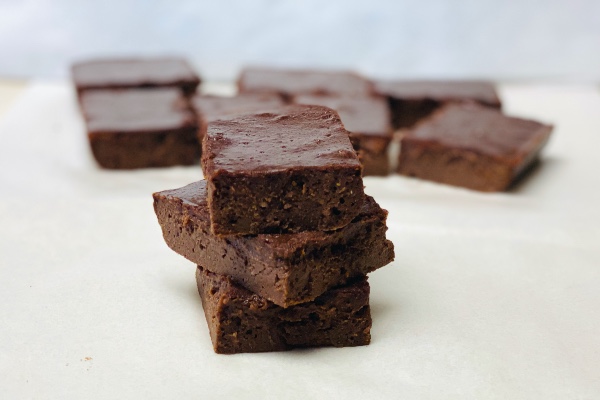
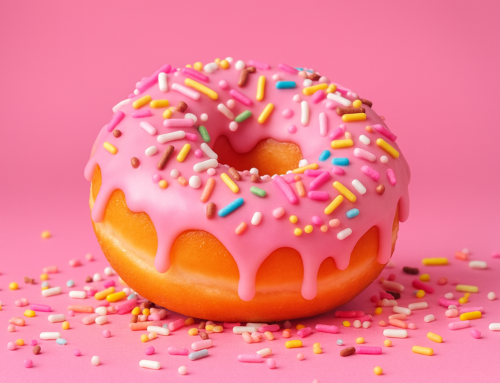
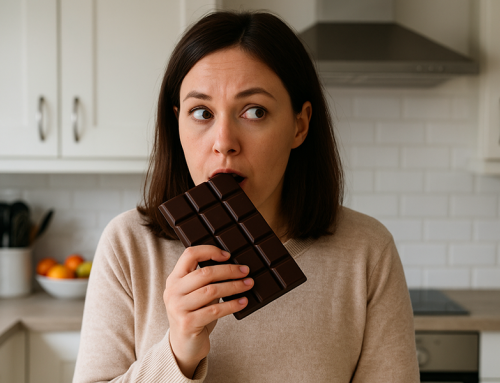
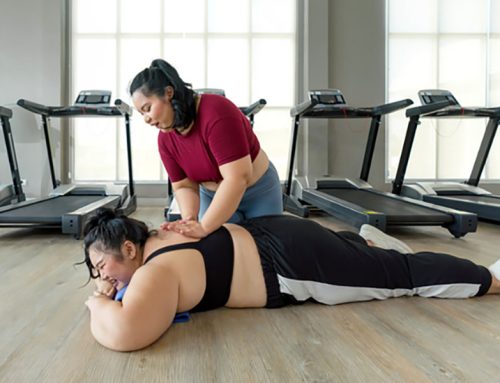
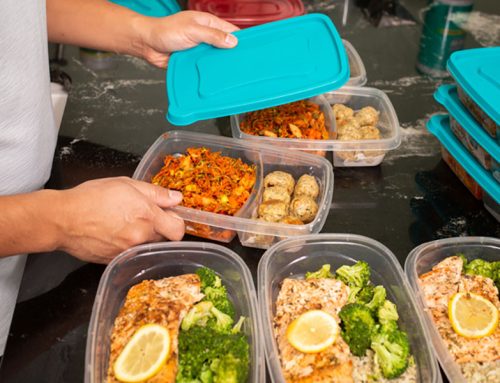

OMG! Tom, these look so good!